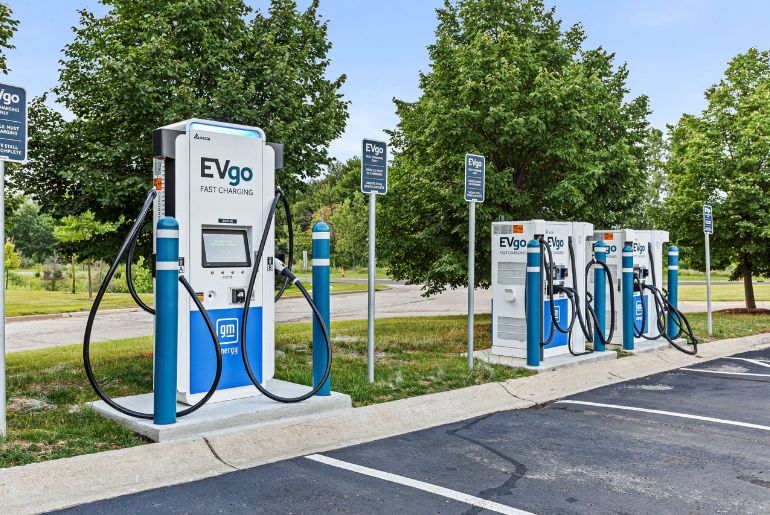EVgo, one of the largest DC fast-charging networks in the United States, has announced an updated expansion strategy aiming to deploy up to 14,400 charging stalls by the end of 2029—more than triple its current footprint.
According to EVgo’s Q2 2025 report, the network currently operates about 4,350 stalls (3,480 public), ranking just behind Electrify America. The company plans a steady ramp-up in installations, with 800–850 new stalls in 2025, accelerating each year:
-
2026: 1,350–1,500 stalls
-
2027: 1,900–2,200 stalls
-
2028: 2,900–3,300 stalls
-
2029: 4,400–5,000 stalls
By 2029 alone, EVgo expects to add more stalls than it has built in its 15 years of operation since 2010.
Public Network Growth
The number of public stalls is projected to reach 4,000 by the end of 2025, exceed 5,000 in 2026, and approach 10,000 by late 2028. The largest leap will come in 2029, with a target of 13,800–14,400 public stalls. These figures factor in the removal of roughly 650 older stalls under EVgo’s ReNew program.
If achieved, this scale would make EVgo’s network roughly half the size of today’s Tesla Supercharger network in the US, providing dense nationwide coverage.
Funding the Expansion
The ambitious plan is backed by major funding, including $1.25 billion from the US Department of Energy’s Loan Programs Office under the Title 17 programme, earmarked for about 7,500 stalls. An additional $225 million loan will support another 1,500 stalls, with potential for more.
Profitability and Industry Outlook
EVgo forecasts that by 2029, with 14,000 stalls in operation, average stall performance will match today’s top performers, potentially making the network profitable. However, if profitability rises significantly, competing networks may also accelerate investments, potentially lowering returns industry-wide.
The company’s growth strategy aligns with broader industry forecasts, which predict 137,000 DC fast-charging stalls in the US by 2030—more than double today’s total of about 60,000. By then, the ongoing transition from CCS1 to NACS connectors is expected to be fully resolved.
With aggressive build targets, robust funding, and a rapidly expanding EV market, the next five years could be transformative for EVgo and the US charging landscape.

